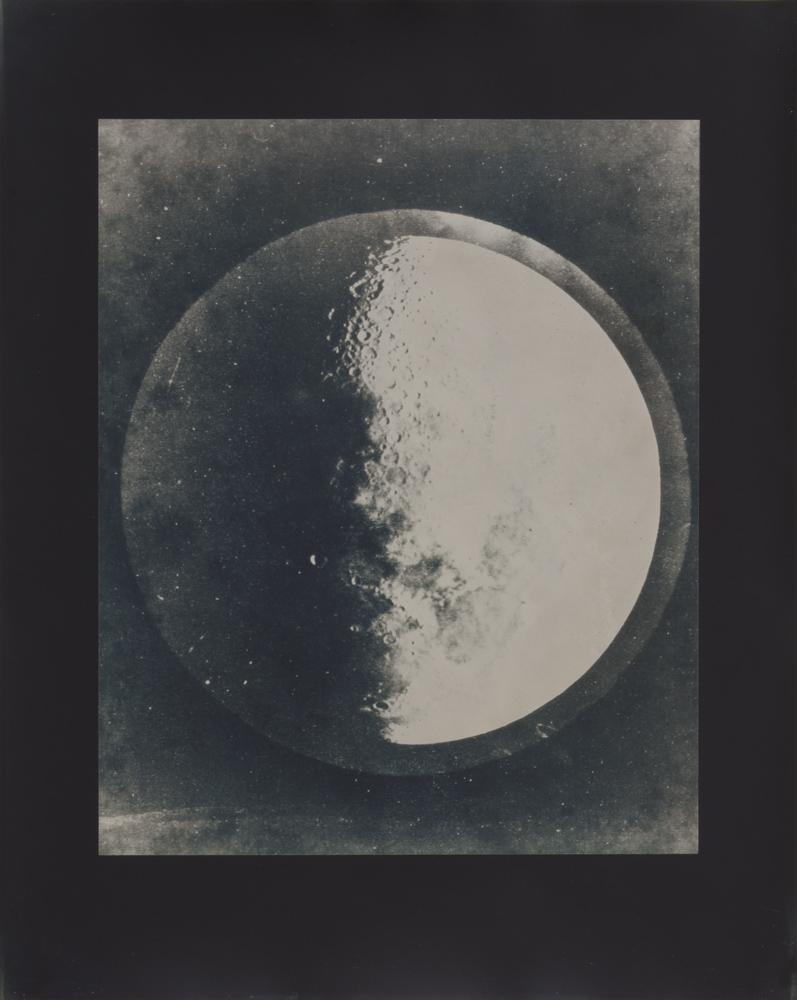
Smoky, sunny and lunar skies
Skies in different disguises, whether it is smoky, sunny or lunar. American artist Lisa Oppenheim (b. 1975) has a thing for all kinds of skies. It is a recurrent element in her largely photographic work. Herein Oppenheim investigates photography’s material concerns, enlisting the full width of its history and exploring the technological processes, consumption, and circulation of photographs. She finds her sources in a variety of places such as the Imperial War Museum archive in London or even the photo sharing site Flickr. With the found footage Oppenheim creates new photographs and videos connecting historical imagery and techniques with the present. Her work explores the interactions between an image, its source, and the context in which it is encountered.
For example, in her series Smoke (2011-2012) she appropriates and crops photos of fires or explosions (from a 1913 oil-field explosion to World War II-era aerial surveillance to journalists’ images of the 2011 North London riots), only leaving the fields of billowing smoke intact. The result is compositions resembling innocuous cloudscapes. The titles are taken from the captions accompanying the source images (the titles are long, descriptive, and include the date and location of the event). This way it retains the reference to the fraught circumstances those images capture. Oppenheim solarizes the prints by exposing them with the light of an open flame. By doing so, she tries to connect the content of the work to the process of its production. The works resemble polished-silver outtakes from the Equivalents series of Alfred Stieglitz (taken between 1925-1934).
The moon is the central subject of the series Lunagrams (2010), unique silver-toned photograms. In order to realize these works, the artist borrowed from the archives of New York University mid-nineteenthcentury glass- plate negatives by John and Henry Draper depicting the moon (father Draper was the first to capture the moon on photograph). Oppenheim produced large-format copy negatives, placed them on photographic paper and then exposed them to the moon. The moment chosen by the artist was the time of the lunar phase depicted in the original.
In The Sun is Always Setting Somewhere Else (2006) Oppenheim used photographs of the setting sun taken by U.S. soldiers during their time in Iraq. She found the footage on the website Flickr. The artist reshot the images by holding each photograph at arm’s length in such a way that it aligned with the horizon of the setting sun in her native New York. The work is presented as a 35mm slide show.
A common feature in Lisa Oppenheim’s work is that she gives photographic images new forms and new contexts, and invites us to question and wonder. Smoky, sunny, or lunar skies. They will never bore us and neither Lisa.

Alfred Stieglitz, Equivalent, 1926. Courtesy The Metropolitan Museum of Art New York

Lisa Oppenheim, Lunagrams, 2010. Courtesy the artist

Lisa Oppenheim, The Sun is Always Setting Somewhere Else, 2006. Courtesy Solomon R. Guggenheim New York
